How can you build a legal workflow with Alf?

The automation of legal tasks is one of the main enabling technologies of Legal Tech in 2022. While task automation has already grown significantly in many industries, the practice is only now beginning to be democratized in the legal field thanks to legal software.
Digital transformation efforts in the legal industry are maturing and the focus is now on delivering practical, tangible and measurable results. With artificial intelligence and machine learning based tools still limited in their capabilities and use, digital transformation in the legal field has primarily focused on legal automation.
But what exactly is this technology? What are the advantages for law firms and accountants? In concrete terms, how can you compose your own legal automation workflows with Alf, the legal entity management software? That’s what we’re going to look at in this article.
What is legal automation?
Legal task automation is the use of tools and technologies that allow legal teams to streamline, automate and measure different legal tasks.
Thus, to automate legal tasks, it is important to break down the different actions of a legal process or other task typically performed by legal and financial professionals. It is then a matter of integrating these different actions into an automated task flow through technology.
In particular, automating legal tasks allows lawyers to focus on high-value tasks where they can add unique value as experts, such as negotiations and strategic advice.
How can you build your own automated legal workflow with Alf?
Alf is a productivity and legal workflow automation platform dedicated primarily to the automation of legal tasks. It allows you to automate your legal processes by creating your own workflows for internal or external use. Everything is done intuitively via the Alf platform without having to write a line of code!
Automation based on “jobs”
To automate your workflows, you can use different features called “Jobs” on Alf’s platform. Each workflow is composed of different jobs.
Alf currently has 12 such actions that you can use freely to create your different workflows:
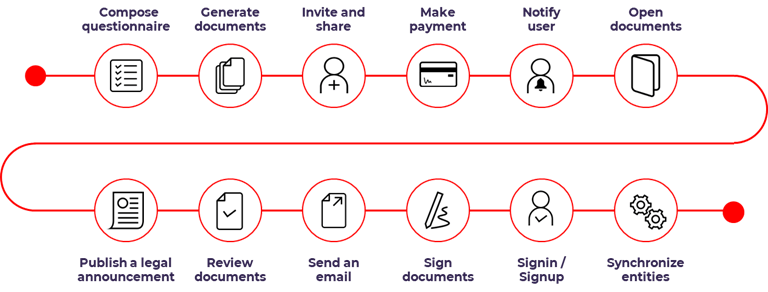
- The questionnaire: it allows you to collect the various information necessary for a project.
- Generate documents: to automatically create customized documents adapted to your needs from the data collected with the questionnaires.
- Invite and share: collaborate with your internal partners or share the ongoing process with external partners (e.g. accountants, bank, courts…)
- Make a payment: set a price for each of your services and decide at which stage of the process your users pay you.
- Open documents: open automatically generated or uploaded documents on the Alf platform without ever having to leave it.
- Publish a legal notice: automatically create and publish your legal announcements
- Review documents: track changes to documents at a glance.
- Email: Stay in touch with your clients and partners throughout the process by forwarding contextual emails in advance to ensure a better customer experience.
- Sign documents: Connect via our third-party vendor docusign to set up electronic signature of your documents.
- Enroll/Register: Know who is accessing the platform and workflows by setting up an authentication step to stay compliant with GDPR regulations.
- Synchronize records: create and synchronize a common hub with company and individual information so that all information is stored on the platform and does not have to be re-provided for the next workflow steps or files.
Let’s take a look at how to set up an automated workflow with Alf:
The different steps to automate legal workflows
Here are the different steps of composing your own automated workflow:
Click either on the “Compose” button right below the logo or on the left menu choose the “Compose” dropdown.
Then select “Workflows” and click the “New” button on the workflows page.
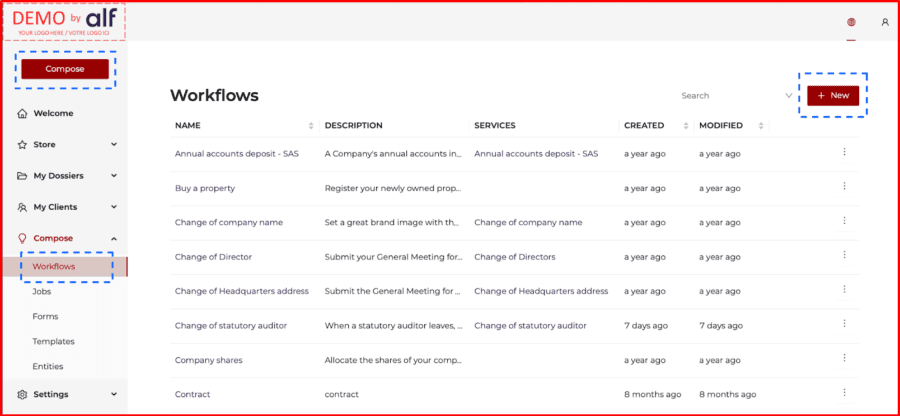
- You are now on the “Newworkflow” page. Fill in the following details:
- Name: Which workflow do you want to create? You can either create a simple workflow of generating an attestation for your internal use or a complex workflow like creating a new company to propose to your clients. The possibilities are limitless here.
- Description: Describe the workflow you are creating. Add a short description of the process you are automating using this workflow.
- Label: Give a label to your workflow. Labels are what your users would see once they start using the workflow. You can simply give the name of your workflow here or you can decide the company name, name of the client, an ID number for more personalization.
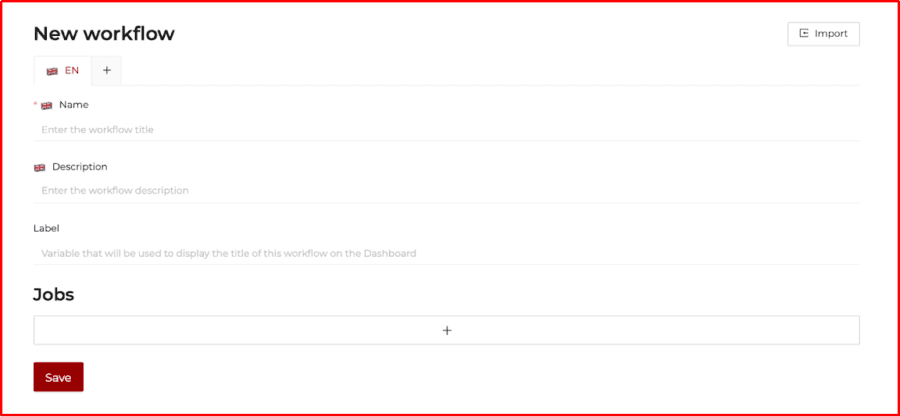
The next step is to click on the “+” button to build your workflow with the jobs created and name them as needed along with a description for each step. Alf proposes several features to enable you to build your workflow. You can find more information here on how to use these features to get the most out of Alf.
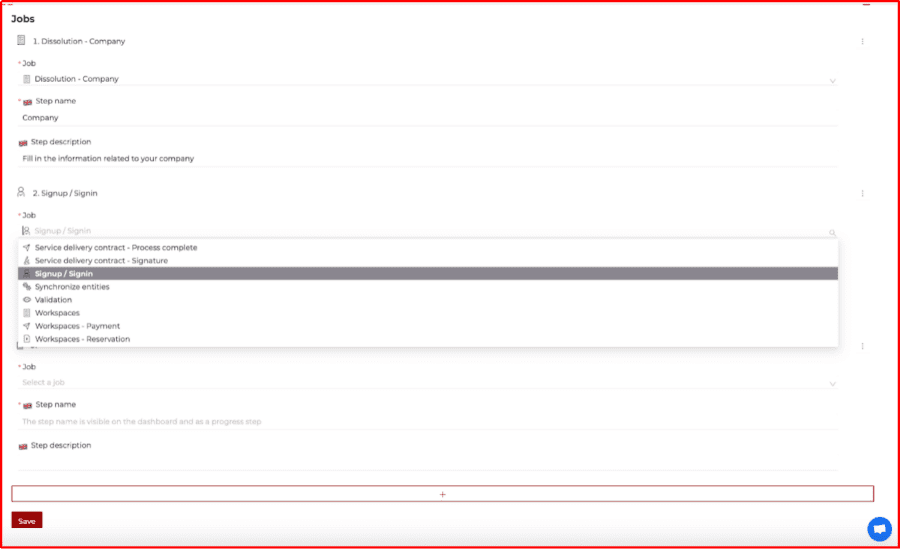
- You can add as many predefined jobs as needed to your workflow depending on the level of complexity and necessity. Generating a simple attestation could be setup in 4 steps while creating a company could go up to 35 steps consisting of multiple questionnaires, emails, documents, signature, payment, legal announcement, etc.
- If you wish to set up your workflow in multilang, feel free to create a tab for each new language; then add the step name and description in the appropriate language and you’re good to go!
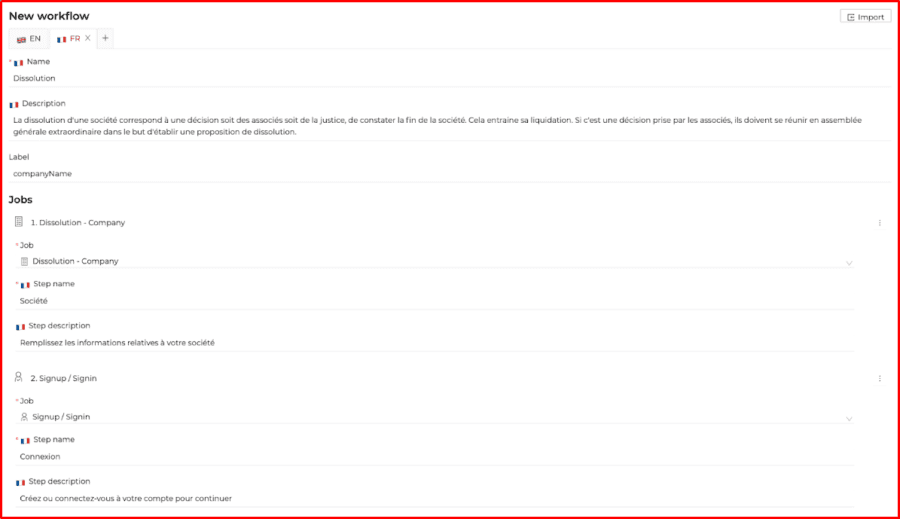
Of course, last but not least, click on the “Save” button. You can now find your new workflow in the list of available workflows on the platform with a process flow of all the steps along with their description beneath each step.
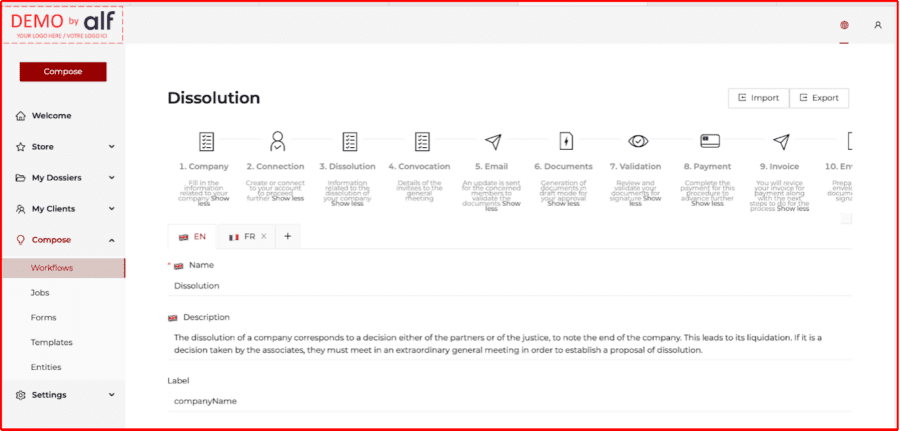
As you can see, it has never been easier to build automated workflows for your legal tasks. There’s no need for coding skills – everything is done via the platform in a simple and intuitive way.
By automating legal tasks, you will be able to save up to 20% of your working time, turning your attention instead to new value-added assignments for your clients.
The legal and accounting professions are bound to evolve significantly over the next few years. Get a head start on your competitors by developing a new way of organising your firm’s work based on the automation of legal processes. This will free you from many time-consuming administrative and/or redundant tasks in your daily work and allow you to focus solely on what really matters to your clients.
A lawyer for 20 years with international law firms and worldwide companies (Canal+, PwC Legal, Nomos, Amazon), I’ve had the experience on the inside: too much time wasted on regularly monitoring recurring tasks linked to files, with low added value. Alf, the first workflow automation platform for the legal files, was designed and developed to respond to this critical problem. Customizable, collaborative and accessible in all languages, Alf is also part of a GreenTech approach that encourages responsible innovation by reducing your carbon emissions. — Sabine Zylberbogen, Registered lawyer and Founder
